Stiripentol add-on therapy for drug-resistant focal epilepsy
- PMID: 32468572
- PMCID: PMC7386790
- DOI: 10.1002/14651858.CD009887.pub5
Stiripentol add-on therapy for drug-resistant focal epilepsy
Update in
-
Stiripentol add-on therapy for drug-resistant focal epilepsy.Cochrane Database Syst Rev. 2022 Sep 6;9(9):CD009887. doi: 10.1002/14651858.CD009887.pub6. Cochrane Database Syst Rev. 2022. PMID: 36066395 Free PMC article.
Abstract
Background: This is an updated version of the Cochrane Review first published in 2014, and last updated in 2018. For nearly 30% of people with epilepsy, seizures are not controlled by current treatments. Stiripentol is an antiepileptic drug (AED) that was developed in France and was approved by the European Medicines Agency (EMA) in 2007 for the treatment of Dravet syndrome as an adjunctive therapy with valproate and clobazam.
Objectives: To evaluate the efficacy and tolerability of stiripentol as add-on treatment for people with drug-resistant focal epilepsy who are taking AEDs.
Search methods: For the latest update, we searched the following databases on 27 February 2020: Cochrane Register of Studies (CRS Web); and MEDLINE (Ovid, 1946 to 26 February 2020). CRS Web includes randomised or quasi-randomised controlled trials from the Specialized Registers of Cochrane Review Groups including Epilepsy, Cochrane Central Register of Controlled Trials (CENTRAL), PubMed, Embase, ClinicalTrials.gov, and the World Health Organization International Clinical Trials Registry Platform (ICTRP). We contacted Biocodex (the manufacturer of stiripentol) and epilepsy experts to identify published, unpublished and ongoing trials.
Selection criteria: Randomised, controlled, add-on trials of stiripentol in people with drug-resistant focal epilepsy.
Data collection and analysis: Review authors independently selected trials for inclusion and extracted data. We investigated outcomes including 50% or greater reduction in seizure frequency, seizure freedom, adverse effects, treatment withdrawal and changes in quality of life.
Main results: On the basis of our selection criteria, we included no new studies in the present review update. We included only one study from the earlier review (32 children with focal epilepsy). This study adopted a responder-enriched design and found no clear evidence of a reduction in seizure frequency (≥ 50% seizure reduction) (risk ratio (RR) 1.51, 95% confidence interval (CI) 0.81 to 2.82; low-certainty evidence) or evidence of seizure freedom (RR 1.18, 95% CI 0.31 to 4.43; low-certainty evidence) when add-on stiripentol was compared with placebo. Stiripentol led to a greater risk of adverse effects considered as a whole (RR 2.65, 95% CI 1.08 to 6.47; low-certainty evidence). When we considered specific adverse events, confidence intervals were very wide and showed the possibility of substantial increases and small reductions in risks of neurological adverse effects (RR 2.65, 95% CI 0.88 to 8.01; low-certainty evidence) and gastrointestinal adverse effects (RR 11.56, 95% CI 0.71 to 189.36; low-certainty evidence). Researchers noted no clear reduction in the risk of study withdrawal (RR 0.66, 95% CI 0.30 to 1.47; low-certainty evidence), which was high in both groups (35.0% in add-on placebo and 53.3% in stiripentol group; low-certainty evidence). The external validity of this study was limited because only responders to stiripentol (i.e. patients experiencing a ≥ 50% decrease in seizure frequency compared with baseline) were included in the randomised, add-on, placebo-controlled, double-blind phase. Furthermore, carry-over and withdrawal effects probably influenced outcomes related to seizure frequency. Very limited information derived from the only included study shows that adverse effects considered as a whole seemed to occur significantly more often with add-on stiripentol than with add-on placebo.
Authors' conclusions: We have found no new studies since the last version of this review was published. Hence, we have made no changes to the conclusions of this update as presented in the initial review. We can draw no conclusions to support the use of stiripentol as add-on treatment for drug-resistant focal epilepsy. Additional large, randomised, well-conducted trials are needed.
Copyright © 2020 The Cochrane Collaboration. Published by John Wiley & Sons, Ltd.
Conflict of interest statement
Francesco Brigo: received travel support and accommodation by Lusofarmaco to attend the annual Congress of the Italian Chapter of ILAE; he received speaking fees from Lusofarmaco. Stanley C Igwe: none known Nicola L Bragazzi: none known
Figures
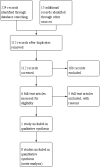
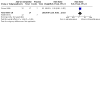
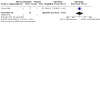
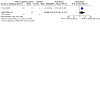
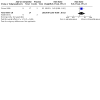
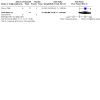
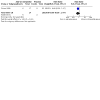
Update of
-
Stiripentol add-on therapy for focal refractory epilepsy.Cochrane Database Syst Rev. 2018 May 10;5(5):CD009887. doi: 10.1002/14651858.CD009887.pub4. Cochrane Database Syst Rev. 2018. Update in: Cochrane Database Syst Rev. 2020 May 26;5:CD009887. doi: 10.1002/14651858.CD009887.pub5. PMID: 29747241 Free PMC article. Updated.
References
References to studies included in this review
Chiron 2006 {published data only}
References to studies excluded from this review
Chiron 2000 {published data only}
-
- Chiron C, Tran A, Rey E, d'Athis P, Vincent J, Tonnelier S, et al. Stiripentol in childhood partial epilepsy: a placebo-controlled trial. Epilepsia 2000;41(Suppl 7):191, Abstract no: 3.070. - PubMed
Loiseau 1988 {published data only}
-
- Loiseau P, Strube E, Tor J, Levy RH, Dodrill C. Neurophysiological and therapeutic evaluation of stiripentol in epilepsy. Preliminary results. Revue Neurologique 1988;144(3):165-72. [PMID: ] - PubMed
Loiseau 1990 {published data only}
-
- Loiseau P, Levy RJ, Houin G, Rascol O, Dordain G. Randomized double-blind, parallel, multicenter trial of stiripentol added to carbamazepine in the treatment of carbamazepine-resistant epilepsies. An interim analysis. Epilepsia 1990;31(5):618-9.
Perez 1999 {published data only}
Rascol 1989 {published data only}
Additional references
Berg 2006
-
- Berg AT, Kelly MM. Defining intractability: comparisons among published definitions. Epilepsia 2006;47(2):431-6. [PMID: ] - PubMed
Berg 2010
-
- Berg AT, Berkovic SF, Brodie MJ, Buchhalter J, Cross JH, Van Emde Boas W, et al. Revised terminology and concepts for organization of seizures and epilepsies: report of the ILAE Commission on Classification and Terminology, 2005–2009. Epilepsia 2010;51(4):676-85. [PMID: ] - PubMed
Brigo 2013
Chiron 2005
-
- Chiron C. Stiripentol. Expert Opinion on Investigational Drugs 2005;14(7):905-11. [PMID: ] - PubMed
Cockerell 1995
-
- Cockerell OC, Johnson AL, Sander JW, Hart YM, Shorvon SD. Remission of epilepsy: results from the National General Practice Study of Epilepsy. Lancet 1995;346(8968):140-4. [PMID: ] - PubMed
Fisher 2009
French 2006
Giraud 2006
-
- Giraud C, Treluyer JM, Rey E, Chiron C, Vincent J, Pons G, et al. In vitro and in vivo inhibitory effect of stiripentol on clobazam metabolism. Drug Metabolism and Disposition 2006;34(4):608-11. [PMID: ] - PubMed
Granata 2009
Guyatt 2008
Higgins 2011
-
- Higgins JPT, Altman DG, Sterne JAC (editors). Chapter 8: Assessing risk of bias in included studies. In: Higgins JPT, Green S (editors). Cochrane Handbook for Systematic Reviews of Interventions Version 5.1.0 (updated March 2011). The Cochrane Collaboration, 2011. Available from handbook.cochrane.org.
International League Against Epilepsy 1989
-
- Commission on Classification and Terminology of the International League Against Epilepsy. Proposal for revised classification of epilepsies and epileptic syndromes. Epilepsia 1989;30(4):389-99. [PMID: ] - PubMed
Kwan 2010
-
- Kwan P, Arzimanoglou A, Berg AT, Brodie MJ, Hauser WA, Mathern G, et al. Definition of drug resistant epilepsy: consensus proposal by the ad hoc Task Force of the ILAE Commission on Therapeutic Strategies. Epilepsia 2010;51(6):1069-77. [PMID: ] - PubMed
Lefebvre 2019
-
- Lefebvre C, Glanville J, Briscoe S, Littlewood A, Marshall C, Metzendorf M-I, et al. Technical Supplement to Chapter 4: Searching for and selecting studies. In: Higgins JPT, Thomas J, Chandler J, Cumpston MS, Li T, Page MJ, Welch VA (eds). Cochrane Handbook for Systematic Reviews of Interventions Version 6. Cochrane, 2019. Available from www.training.cochrane.org/handbook.
Quilichini 2006
-
- Quilichini PP, Chiron C, Ben-Ari Y, Gozlan H. Stiripentol, a putative antiepileptic drug, enhances the duration of opening of GABA-A receptor channels. Epilepsia 2006;47(4):704-16. [PMID: ] - PubMed
Strauss 2005
-
- Strauss S, Richardson W, Glasziou P, Haynes R. Evidence-Based Medicine: How to Practice and Teach EBM. 3rd edition. Edinburgh, United Kingdom: Churchill Livingstone, 2005.
References to other published versions of this review
Brigo 2012
Brigo 2014
Brigo 2015
Publication types
MeSH terms
Substances
Grants and funding
LinkOut - more resources
Full Text Sources
Research Materials

